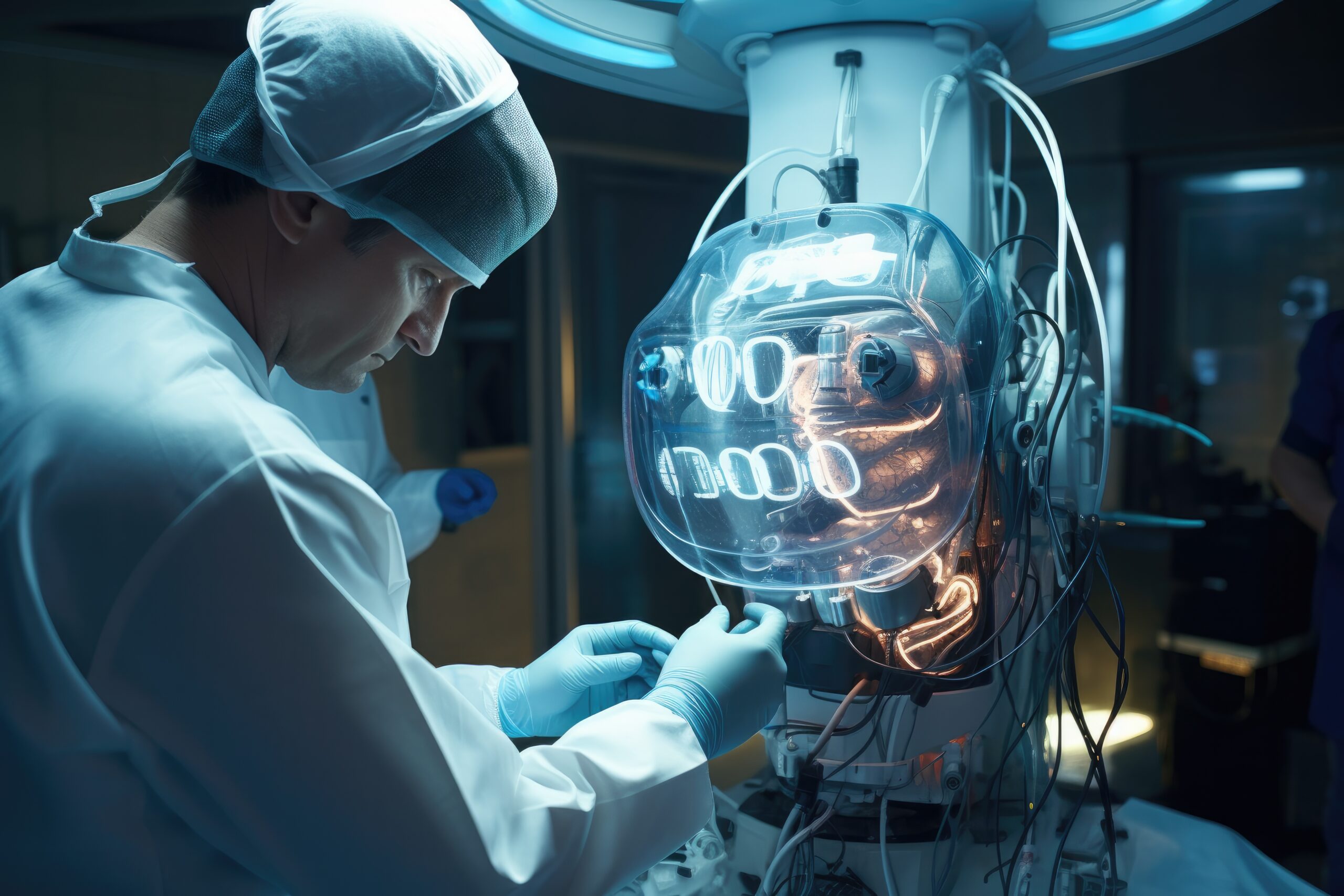In-vitro fertilization (IVF) has helped millions of couples achieve their dream of parenthood. However, the process can be intricate and unpredictable, with success influenced by several factors such as egg quality, embryo management, and implantation. Today, Robotic IVF technology is revolutionizing the way this process works.
The fusion of advanced fertility treatments with robotic precision is transforming the IVF landscape. This innovation enhances accuracy and efficiency, significantly reducing the risk of human error. The next generation of IVF aims to deliver higher success rates and more reliable outcomes for aspiring parents.
What Is Robotic IVF?
It leverages robotics and artificial intelligence to automate and enhance critical steps in the IVF process. Unlike traditional IVF, which depends on manual laboratory work, embryologists typically handle eggs and sperm under microscopes, carefully selecting embryos and performing intricate tasks by hand.
Robotic IVF employs precision instruments and computer-guided technology to assist in complex procedures. These robotic systems operate with micron-level accuracy, minimizing variability and enhancing outcomes. The aim is not to replace human expertise but to support and refine it, ensuring greater consistency and reliability throughout the process.
How Robotic IVF Works
Modern IVF involves several key steps. These include egg retrieval, sperm preparation, fertilization, embryo culture, and transfer. Robotic IVF uses automation and AI in critical IVF stages which boosts accuracy and improves outcomes.
- Egg and Sperm Selection: Robots utilize advanced imaging to evaluate eggs and sperm, while AI evaluates their movement, shape, and overall quality. This process is faster and more precise than human observation, helping to select the healthiest gametes for improved fertilization outcomes.
- Micromanipulation and Injection: Precision is crucial in ICSI procedures, where robotic arms inject a single sperm directly into an egg. Their computer-guided movements are highly stable, enhancing fertilization rates while reducing the risk of egg damage.
- Embryo Monitoring: Embryos grow in special incubators. These have time-lapse imaging. AI software tracks development continuously and helps pick the best embryos for implantation. Robotic incubators maintain perfect conditions which avoids stress from manual handling.
- Embryo Transfer: Robotic systems assist in guiding the transfer catheter using real-time imaging, ensuring the embryo is placed in the optimal spot within the uterus. Accurate positioning can significantly enhance the chances of successful implantation.
Advantages of Robotic IVF
The main strength of robotic IVF is its precision and consistency. Here is how it improves fertility treatment outcomes:
- Greater Accuracy: Robotic systems work with micro-level precision which reduces errors in key steps like sperm injection. The result is a better chance of healthy embryo development.
- Consistent Results: Manual methods vary between embryologists. It creates a standardized process which delivers more consistent success across treatment cycles.
- Better Embryo Selection: AI-powered imaging tools evaluate thousands of data points for each embryo, detecting subtle growth patterns that may be missed by humans. This allows for the selection of embryos with the highest potential for successful development.
- Reduced Contamination: Robotic systems minimize direct handling which lowers the risk of contamination and physical stress. The environment remains more stable and sterile.
- Data-Driven Decisions: Each robotic IVF step produces valuable data. AI analyzes this information to refine future treatments and creates a continuous improvement cycle for better outcomes.
How Robotic IVF Improves Fertility Treatment Success
The success of traditional IVF largely depends on factors like age, overall health, and laboratory expertise, with average global success rates ranging from 30% to 50% per cycle. Robotic-assisted IVF offers a promising alternative, with studies indicating it may boost fertilization and implantation outcomes by 10–20%.
Here’s how it contributes to better results:
- Better Fertilization: Precise sperm injection improves fertilization success.
- Higher-Quality Embryos: Stable culture conditions support stronger embryo development.
- Improved Implantation: Accurate embryo placement increases the chance of pregnancy.
- More Reliable Outcomes: Consistent procedures help reduce cycle failure rates.
Success still depends on biological factors, such as egg reserve and uterine health. However, robotic systems eliminate many technical limitations that previously hindered success rates.
The Role of AI in IVF Precision
Artificial Intelligence is vital for assisted reproduction. In IVF labs, AI provides key support in:
- Predicting Embryo Viability: AI forecasts which embryos are most likely to succeed.
- Non-Invasive Screening: It identifies potential chromosomal issues without harming the embryo.
- Optimizing Treatment: AI analyzes hormone and imaging data to personalize medication protocols.
For instance, AI algorithms can evaluate and score embryos by analyzing their growth patterns to predict implantation potential. This not only enhances accuracy but also helps reduce the emotional and financial burden of undergoing multiple IVF cycles.
Is Robotic IVF Right for You?
Not every couple needs robotic IVF. However, it can be particularly helpful for:
- Couples with multiple failed IVF attempts
- Patients with poor egg or sperm quality
- Older patients with reduced fertility potential
- Those seeking advanced, precision-based treatment
The Future of Fertility Treatment
Robotics in reproductive medicine is still developing, but its benefits are already evident. An increasing number of clinics are implementing robotic IVF, aiming for higher success rates, fewer complications, and greater overall efficiency in the process.
In the future, machine learning will make IVF even more personalized. Predictive analytics could identify the optimal treatment day, determine the ideal timing for embryo transfer, and tailor hormonal support to each patient’s unique profile.
These innovations bring renewed hope, making IVF more reliable and accessible. They also help create a process that is emotionally supportive for couples on their journey to parenthood.
Final Thoughts
Robotic IVF is more than just cutting-edge technology—it represents a significant advancement in fertility care. By integrating robotics, AI, and data science, it enhances every stage of the IVF process, delivering superior accuracy, safety, and consistency.
Our goal is simple, we help couples achieve their dream of parenthood. We do this through smarter, more precise, and more successful fertility treatment.
FAQs
Robotic IVF uses AI and precision robotics to minimize human error in key steps like embryo selection and sperm injection. This enhances fertilization rates and embryo viability. The result is a more consistent and reliable treatment process.
No, the goal is to enhance, not replace, expert skills. The technology provides embryologists with superior tools and data-driven insights. This partnership between human expertise and robotic precision delivers the best outcomes.
It is particularly beneficial for couples with previous failed cycles or poor gamete quality. It also helps older patients and those seeking the most advanced, precision-based treatment available.
At Advamed Hospital, we integrate advanced laboratory technologies with a commitment to precision medicine. Our focus is on using data-driven insights and refined protocols to create highly personalized treatment plans for every patient, ensuring the highest standards of care.
We ensure accuracy through stringent laboratory protocols, advanced imaging systems, and the expertise of our specialist embryologists. Our goal is to minimize variability and create a stable, optimal environment for embryo development at every stage of the process.












